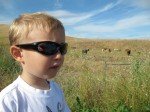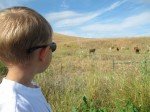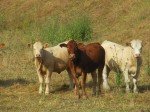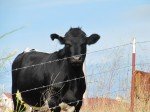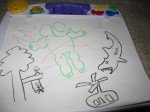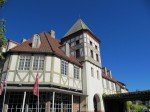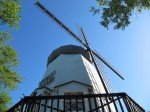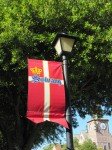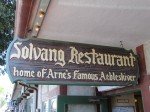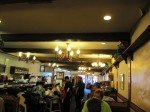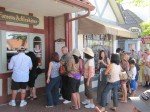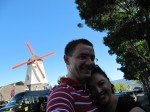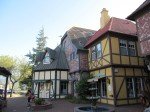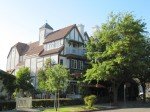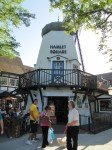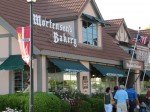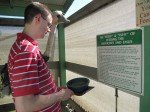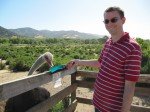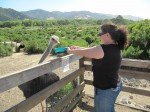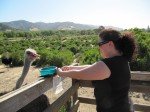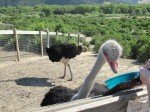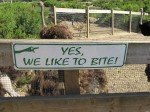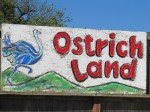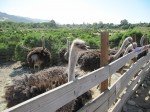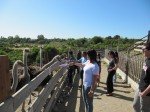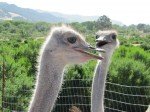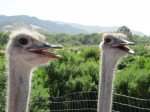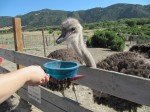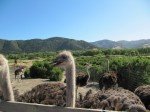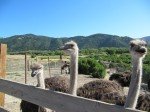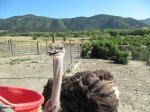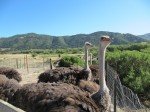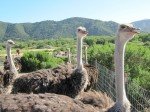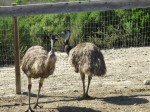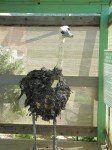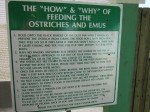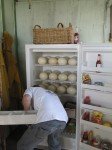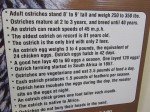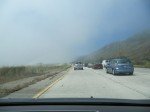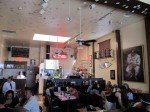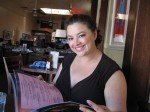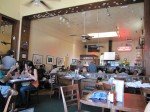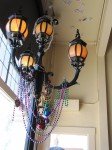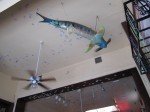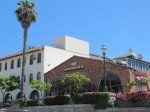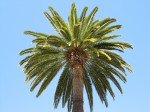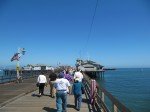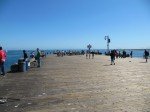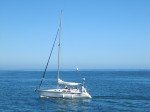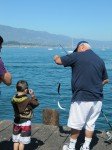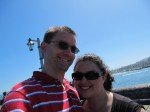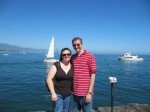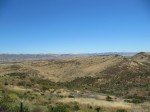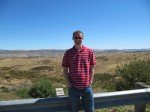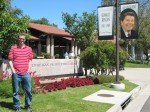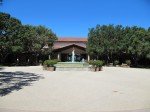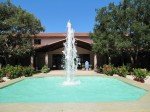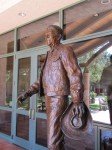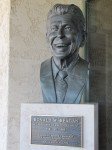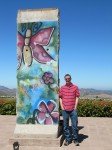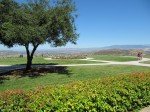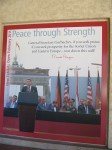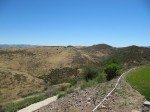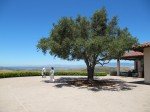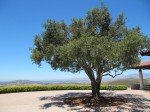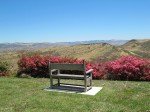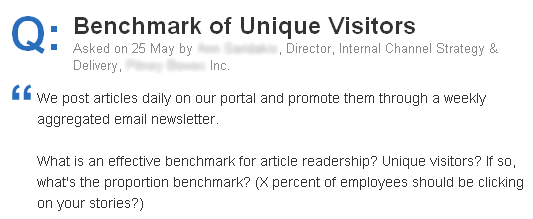I take my camera everywhere I go. Why? Because you never know when you are going to run into suburban wildlife with your son and dog on a walk like I did today. We also came back to play cars and we did some awesome drawing and as you can probably tell I’m quite the artist.
Month: May 2010
60 Minutes: The SEED School
“There’s a unique school that’s giving kids from an inner-city neighborhood that only graduates 33 percent of its high school students a shot at college they never had before. Byron Pitts reports on the SEED school, the first urban, public boarding school.”
Geeks and Nerds
Solvang, CA
Our last stop yesterday was to Solvang, CA which I’ll let Wikipedia explain: “Solvang was founded in 1911 on 11,000 acres (4,500 ha) of the Rancho San Carlos de Jonata Mexican land grant, by a group of Danish educators, who traveled west to escape midwestern winters. The city is home to some bakeries, restaurants, and merchants offering a taste of Denmark in California. The architecture of many of the buildings follows traditional Danish style. There is a copy of the famous Little Mermaid statue from Copenhagen, as well as one featuring the bust of famed Danish fable writer Hans Christian Andersen. A replica of the Copenhagen observatory Rundetårn in the scale 1:3 was finished in 1991 and can be seen in the city centre.”
OstrichLand
Jeremy Feeding Ostrichs from Jeremy Person on Vimeo.
OstrichLand was probably my second favorite stop yesterday, mostly because I love animals so it was fun getting so close to the ostriches. They are som big, powerful and dare I say even ugly creatures!
Here are some interesting facts I learned from my visit:
- Adult ostriches stand 8′ to 9′ tall and weight 250 to 350 pounds
- Ostriches mature at 2 to 3 years, and breed until 40 years
- An ostrich can reach speeds of 45 MPH
- The oldest ostrich on record is 81 years old
- The ostrich is the only bird with two toes
- An ostrich egg weighs 3 to 4 pounds, the equivalent of 24 chicken eggs. Ostrich eggs hatch in 42 days
- A good hen lays 40 to 60 eggs a season. One layed 120 eggs! Ostrich farming started in Southern Africa in 1857
- Ostriches are vegetarians and eat 3.5 pounds of food a day
- Each ostrich produces 1.5 pounds of feathers per season
- Ostrich hens incubate the eggs during the day, the rooster sits on the eggs at night
- An ostrich chick grows one foot taller each month
- The ostrich is native to Africa
- Ostriches do not bury their heads in the sand.
Santa Barbara
Regan National Library
Christina and I hit the road over the last few days to visit her grandparents in Southern CA. We left on Saturday morning a few minutes after 5am and traded off sleeping and driving. I didn’t get to bed until 11pm Friday night because I was up cleaning the house from a long week. I’m always glad I cleaned the house prior to traveling because there is nothing more stressful than coming home tired from a trip than returning to a disorganized home. Not to mention I had someone checking in on Wilbur so I wanted to give the impression I have my life half together. I made a big pot of coffee which Christina and I took with us on the road. About 30 minutes down I-5 I was a talking fool, the caffeine hit me and I don’t remember what the conversation consisted of but it was tired caffeinated banter from me I’m sure. I loaded up my iPhone with a bunch of podcasts which came in handy after the caffeine and my bantering slowed down. I’ll post the interesting podcasts later with some comments, but I was happily playing talk show DJ for a few hours. At some point she fell asleep which gave me a chance to listen to Pandora for a while.
I think our first stop was a gas station and then McDonalds for a gourmet breakfast of Egg McMuffins. The McDonalds we stoppped at was really busy for some reason and in 20 minutes or less we were back on the road. If my groggy memory serves me right Christina took over driving and I took a nap for an hour. I can usually get by on very little sleep but anything under 6 hours and I’m a zombie. I woke up when Christina was going over the grapevine and we listened to more podcasts until we hit LA. We talked with Christina’s sister, brother in law and saw played with their baby for a few minutes before getting in their car to drive another two and a half hours to Palm Desert which is outside of Palm Springs. Holy moly Palm Desert is hot and dry but I guess that is why the word desert is in its name.
We got back to the LA area around 9pm so Christina and I went to a nice mexican restaurant. Somewhere between 10:30 and 11:00 I found my hotel which is a few feet from where trains go through town. Luckily only one train went by which was before I went to sleep. We had planned on going down to San Diego Sunday morning to see friends but I think we were overly optomistic and decided it would be too much in one day. Therefore we decided to head back to the Bay Area and hit as many destinations headed north as we could. The first stop we made was completely unplanned which was the Ronald Regan National Library (they need a new web designer). Of all places we visited yesterday I think the Regan Library was my favorite. The above pictures and video are from our visit.
Highlights From Maker Faire 2010
I wasn’t able to go this year but hope to go next year.
How Do You Measure Effective Readership?
I received this question this afternoon from an association site I belong to. Below is the answer I responded with on the association site but I want to make sure anyone can add additional thoughts to this topic which is why I am also posting it here (similar to the lemonade stand analogy below). How would you have answered the question?
Good question, we don’t have a set percentage to gauge success. My benchmark wouldn’t be a traditional benchmark. When news articles or internal announcements get more “hits” we assume it is due to what the article pertains to. We notice that content which isn’t particularly engaging doesn’t get many hits. Anything from C Level Management, or a major announcement tends to get higher viewership. Even every day news items may not pertain to everyone. Furthermore, it just may not interest them. It is one of those instances where “you can lead an employee to the news story but you can’t make them consume it”.
We may want 100% of our associates reading what we put out but we are finding that isn’t the case and we are looking to move to a subscription and “pushed” communications model. We are playing with a design that has a top portion of the page what has what is considered “pushed” news and a bottom section which contains what each associate has subscribed to. Our philosophy is if they have helped decide what they want to see, they will be more inclined to visit the site, or read the content in the email summary.
If you have the ability it would be great to show percent viewing the news story but also the number of comments and how well the story was rated. I’d personally be much more interested in that data as opposed to knowing an article was clicked or accessed. It would also be great to have analytics on how long they were on the page and site (time wise). If you have 1,000 employees and you are able to get all 1,000 to click a 5,000 word article but on average they only stay on that page for 10 seconds, I’d consider that an opportunity.
I’m trying to change our culture but I know it isn’t easy. Currently I would say we only focus on content consumption but I want to get us to where we also focus on opinions and ratings of the content. I’m trying to make it so we think of ourselves as a lemonade stand. We, the Communications Group push out lots of lemonade. If the lemonade doesn’t have enough sugar in it nobody will want to drink it. If we put our lemonade on the wrong side of town we make it too tough for them to find us so we opened several lemonade stands (one on our Intranet and one via email like yourself).
If we sell the lemonade and only focus on how much we sell, as opposed to what people think of it, we won’t grow our lemonade business. Sales and number of product sold is important but I’d take one customer who pays $1 for my lemonade and gives me feedback to 10 customers who each pay a dollar ($10 total) who drink my lemonade yet don’t give me feedback to improve my product long term. The lemonade stand that focuses on getting the most customers to their stand may be able to attract lots of customers, but the lemonade stand that focuses on what the customers think of their product will be the stand likely to stay open the longest…and make the most money. Not sure if that analogy works but it was fun to try.
It is also almost like a one sided conversation if we only focus on analytics. If I do all of the talking, and you aren’t allowed to talk back, how valuable is that for you and the organization? My benchmark would be anything that can show you are providing engaging content that inspires enterprise collaboration and knowledge sharing. For instance an article with 10 replies/comments that is rated highly is of more importance to me from a benchmarking perspective than one that is accessed more often. Great question, that is what I am thinking is the best benchmark but I’d imagine others may find other analytics more useful.
